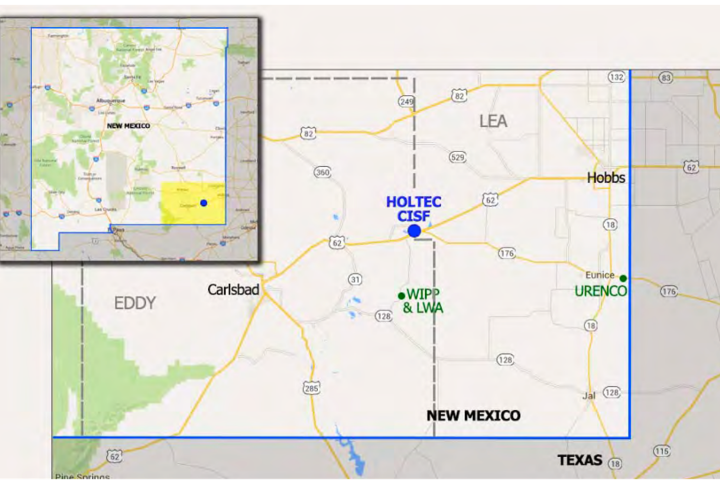FOR IMMEDIATE RELEASE March 17, 2014
DOE Nuclear Weapons Budget Surpasses Cold War Record
Bomb with New Military Capabilities up 20%
Dismantlements Cut By Nearly Half
Nonproliferation Programs Down 21%
Cleanup Funding Flat
Santa Fe, NM – The Obama Administration has finally released its detailed budget for fiscal year 2015, which starts October 1. By law the president’s proposed budget is required to be released not later than the first Monday of February.
Contrary to President Obama’s rhetoric about a future world free of nuclear weapons, most famously expressed in his April 2009 speech in Prague, the President asks for a 7% increase for nuclear weapons research and production programs under the Department of Energy’s semi-autonomous National Nuclear Security Administration (NNSA). NNSA’s “Total Weapons Activities” are slated to rise to $8.3 billion in FY 2015, and to an astounding $9.7 billion by FY 2019, 24% above this current fiscal year 2014. Obama FY 2015 budget request sets a new record for DOE nuclear weapons spending, even exceeding the Cold War high point in 1985 under President Reagan’s military buildup.
Of particular interest is the hands-on nuclear weapons work in the budget category “Directed Stockpile Work,” increased by $305 million (or 12.5% above FY 2014), whose overwhelming focus is Life Extension Programs (LEPs). President Obama wants $634 million (+20%) for the B61 nuclear bomb LEP, which has already exploded in costs from an originally estimated $4 billion to more than $10 billion. Each bomb will end up costing more than twice its weight in gold.
In addition to extending the service life of the bomb by decades, this Life Extension Program will combine three tactical or “battlefield” variants and one strategic variant together into one all-purpose nuclear bomb. The LEP will also transform the B61 from a simple analogue bomb into a digital bomb that interfaces with future super-stealthy fighter aircraft, which themselves will cost an astronomical $1 trillion (although not all will be assigned to a nuclear mission). A separate $1.8 billion Defense Department program for a new tail fin guidance kit will transform the B61 into the world’s first nuclear smart bomb. Despite all this, the U.S. government denies that it would ever endow existing nuclear weapons with new military capabilities.
While rebuilding nuclear weapons at exorbitant expense, the Obama Administration proposes to slash dismantlements by nearly half (45%), from an already paltry $54.2 million to $30 million. Dismantlement work at the Pantex Plant will be cut by 40%. Ironically, much of the dismantlement work that remains is “to provide parts for the life extension programs (B61 and W80-1).” Dismantlements will continue at the same rate at the Y-12 Plant, but its primary aim is to produce “feedstock [highly enriched uranium] for internal and external customers (e.g. Naval Reactors).” Dismantlements are described as a “a workload leveler across all programs,” indicating that instead of being a prioritized step toward a future world free of nuclear weapons, it is merely filler work in between rebuilding nuclear weapons during Life Extension Programs. NNSA FY15 budget, PDF page 109. [All following page numbers are in the same format.]
The construction of the Uranium Processing Facility at the Y-12 plant is capped at $6.5 billion. A recent study by the Pentagon’s Office of Cost Assessment and Project Evaluation predicted that this exorbitant facility, originally estimated by NNSA at ~$600 million, would cost between $12 to 19 billion. To bring it in at $6.5 billion NNSA has cut out all dismantlement and HEU downblending operations, making it a production-only nuclear weapons plant (pp. 319-323).
NNSA’s budget “Defer[s] the W78/88-1 LEP to some date beyond FY 2019” (p. 84), effectively meaning its cancellation. The W78/88-1 LEP was to produce a proposed “interoperable warhead,” using the plutonium pit from a third warhead, the W87. Nevertheless, the Los Alamos National Laboratory plans to “Build W87-design developmental pits each year to sustaining [sic] fabrication capability” (p. 117). The controversial Chemistry and Metallurgy Research Replacement (CMRR) Project for expanded plutonium pit production remains abandoned, but NNSA plans to raise the amount of plutonium used in the already constructed Rad Lab and pursue “pre-conceptual design efforts for the modular acquisition concept” to substitute for the CMRR (p. 219). NNSA still plans to “Execute a plutonium strategy [at LANL] that achieves a 30 pit per year capacity by 2026,” (p. 70) for which it gives no clear requirement or reason.
Key nonproliferation programs designed to halt the spread of nuclear weapons have been slashed by $300 million (-21%), even though nuclear weapons are recognized as the greatest existential threat to the United States. “Defense Environmental Cleanup”, the nation-wide program to clean up the Cold War legacy of radioactive and toxic contamination, is being cut from $5.8 billion to $5.6 billion, despite the fact that estimated costs keep climbing.
All of this is evidence of a pattern where the U.S. will spend massive amounts on nuclear weapons “modernization,” while nonmilitary domestic services are cut or flat lined. In December 2013 the nonpartisan Congressional Budget Office (CBO) released its study Projected Costs of Nuclear Forces 2014 -2023. Its stunning conclusion was that estimated costs for maintenance and “modernization” of the nuclear weapons stockpile, delivery systems, and research and production complex would total $355 billion over the next decade. The CBO also reported that costs after 2023 would increase yet more rapidly since “modernization” is only now beginning. The report did not attempt to project costs for maintenance and modernization of nuclear forces over the planned period of the next thirty years, but given current trends it will easily exceed one trillion dollars.
In one piece of good news the NNSA is finally putting the Mixed Oxide (MOX) Fuel Fabrication Facility at the Savannah River Site in South Carolina in “cold standby.” The MOX program is a failed attempt in the laudable goal of disposing of 34 metric tons of weapons-grade plutonium. The MOX Program’s life cycle costs have exploded to an estimated $30 billion, and NNSA is now studying cheaper alternatives. This has major positive impacts on the Los Alamos National Laboratory (LANL), which was slated to process 2.5 metric tons of plutonium every year as feedstock for the MOX Fuel Fabrication Facility. It also further undermines the need to build massive new plutonium facilities at LANL.
Jay Coghlan, Nuclear Watch New Mexico Director, commented, “Increased budgets for nuclear weapons are being paid off the back of dismantlements, nonproliferation and cleanup programs, which is just plain wrong. It’s common knowledge that NNSA’s nuclear weapons programs have a staggering track record of cost overruns, schedule delays and security breaches. It’s less well known that these programs may undermine stockpile reliability by introducing unneeded, incredibly expensive changes to existing nuclear weapons that have been extensively tested and are known to be even more reliable than originally thought. Clearly, NNSA’s nuclear weapons programs should be cut to help pay for the expansion of nonproliferation programs that actually enhance national security, cleanup programs that protect the environment while creating jobs, and dismantlement programs that get of nuclear weapons forever.”
# # #
For budget release requirement not later than the first Monday of February see U.S. Code, Title 31, Subtitle II, Chapter 11, § 1105, “Budget contents and submission to Congress.”
The FY 2015 DOE nuclear weapons request is calculated as the highest ever using data from Atomic Audit, Brookings Institute, 1998, Stephen Schwartz editor, Table A-2. It gives 5.494 billion in 1996 dollars as the cost for DOE nuclear weapons research, production and testing programs in 1985. Adjusted for inflation that is $8.259 billion in 2014 dollars.
The NNSA’s FY 2015 budget is available at http://energy.gov/sites/prod/files/2014/03/f12/Volume_1_NNSA.pdf
The Congressional Budget Office report Projected Costs of Nuclear Forces 2014 -2023 is available at http://www.cbo.gov/sites/default/files/cbofiles/attachments/12-19-2013-NuclearForces.pdf


 NNSA’s Performance Evaluation Reports for its eight nuclear weapons research and production sites
NNSA’s Performance Evaluation Reports for its eight nuclear weapons research and production sites